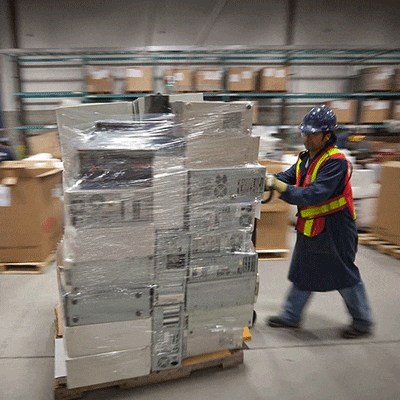 On July 30, 2014 Representative Mike Honda, a Democrat from the 17th District of California introduced the Land Based Debris Reduction Act or H.R. 5283 into the United States House of Representatives. While the primary goal of the Act is to reduce the amount of litter or debris entering America’s oceans through the establishment of national municipal solid waste (MSW) recycling goals, it also would require the U.S. Environmental Protection Agency (USEPA) to recommend recycled content requirements and/or regulatory action for products or packaging that comprise a large portion of the waste stream or have a high life cycle impact on the environment.
On July 30, 2014 Representative Mike Honda, a Democrat from the 17th District of California introduced the Land Based Debris Reduction Act or H.R. 5283 into the United States House of Representatives. While the primary goal of the Act is to reduce the amount of litter or debris entering America’s oceans through the establishment of national municipal solid waste (MSW) recycling goals, it also would require the U.S. Environmental Protection Agency (USEPA) to recommend recycled content requirements and/or regulatory action for products or packaging that comprise a large portion of the waste stream or have a high life cycle impact on the environment.
According to a 2012 USEPA study, the U.S. annually generates 251 million tons or 502 billion pounds of MSW, typically defined as non-industrial or non-hazardous waste generated on a day-to-day basis by residents, schools, institutions, and businesses. Only 34.5 percent of that figure is currently being recycled, which means Americans are annually discarding 164 million tons of potentially recyclable or compostable material or enough trash to circle the earth at least 24 times. H.R. 5283 calls form the U.S. to reach a national recycling rate of 50 percent by 2020 and 65 percent by 2030, a steep challenge for a country with widely varying regional and local recycling laws, collection infrastructures, accessibility to viable end-markets, and public awareness levels.
The largest product category in the MSW stream is containers and packaging at 30 percent or 75.2 million tons. Of this figure, only 51.5 percent is currently being recycled. Not unlike the national MSW figures, the biggest portion of non-electronic material entering Sims Recycling Solutions’ facilities is consumer electronic product packaging –cardboard boxes, plastic bags, wooden pallets, shrink wrap, molded polystyrene and peanuts, foam and more. Unlike the public awareness barriers faced on the national level, Sims’ managers and employees are well schooled on the benefits and value of recycling and are routinely seeking out and utilizing recycling outlets for most packaging that comes into our facilities as any material sent to landfill is considered an unnecessary business expense. With that said, Sims’ facilities regularly receive certain types of packaging materials that are difficult to recycle because they are contaminated (i.e. cardboard boxes or Styrofoam that are soiled or covered in tape or labels); contain two types of recyclable materials that cannot be separated easily (i.e. cardboard with foam glued to it); or are technically recyclable but not practically recyclable (i.e. small volumes, light weights, atypical colors, or distant geographic proximity to an end market).
While it is currently not clear how the Act will be received in Congress, Sims agrees with the notion that increased recycling opportunities for packaging are necessary and supports the use of recyclable packaging guidelines as developed and advocated for by the Green Electronics Council via their Electronic Procurement Environmental Assessment Tool (EPEAT). EPEAT is a global registry designed by multi-stakeholders with assistance from the USEPA, to help institutions and consumers evaluate, compare and select environmental attributes and performance of electronic products commonly used in the workplace or home. Per EPEAT, for electronic product packaging to be considered recyclable, it must meet the following criteria:
- All dissimilar packaging materials shall be separable without the use of tools (e.g. foam shall not be permanently adhered to any other type of packaging material).
- At least 90 percent of packaging (by weight) shall consist of materials that are compostable, fiber based or recyclable.
- At least one of the three criteria below must be met in the country the product is being sold into:
- Material is recycled at a national rate of 15 percent.
- Sixty-five percent of the country’s population has local access to drop-off or collection services for the material.
- Material is covered by a nationally mandated packaging scheme in which the manufacturer has a minimum recycling goal of 15 percent.
To learn more about the Land Based Debris Reduction Act or H.R. 5283 and track its progress, visit www.congress.gov.
